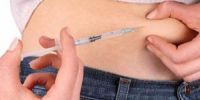Article
Lower Rate of Hypoglycemia with Insulin Degludec in Obese, Diabetic Patients
Author(s):
Results of a recent meta-analysis suggest lower rates of hypoglycemia with insulin degludec in obese patients when compared with insulin glargine.

According to results of a recent meta-analysis, treatment of type 2 diabetes mellitus (T2DM) with insulin degludec (IDeg) is associated with lower rates of nocturnal and overall hypoglycemia in obese patients when compared with insulin glargine (Iglar). The medications offered similar glycemic control, as measured by glycated hemoglobin (HbA1c).
Helena W. Rodbard, MD, an endocrinologist with Endocrine and Metabolic Consultants in Rockville, MD, and colleagues reported their findings at ENDO 2013: The Endocrine Society’s 95th Annual Meeting & Expo in San Francisco on June 18, 2013.
According to the researchers, there is an established correlation between body mass index (BMI), insulin resistance, and therefore increased insulin doses. Previous work has shown that BMI does not impact ability to reach target HbA1c with IDeg. In a recent meta-analysis, IDeg was associated with lower rates of overall (17%) and nocturnal hypoglycemia (32%) in patients with T2DM when compared with IGlar. Pooled results for both type 1 and T2DM patients showed a statistically significant 26% reduction in nocturnal hypoglycemia.
The current study is a post hoc analysis in which the authors aimed to compare rates of confirmed hypoglycemia (defined as plasma glucose <56 mg/dL and severe episodes in which patients required assistance), nocturnal hypoglycemia (between midnight at 6 am), and glycemic control with IDeg and IGlar in a clinically obese population.
The meta-analysis included data from five phase IIIa, randomized, open-label, treat-to-target (FPG <90 mg/dL) clinical trials of 26 or 52 weeks' duration. A total of 1,791 diabetic patients with a BMI > 30 kg/m2 were included; they received either IDeg (n = 1,195) or IGlar (n = 596) daily. The analysis of hypoglycemic episodes was based on a negative binomial regression model.
IDeg was associated with a greater reduction from baseline in fasting plasma glucose when compared with IGlar (p < 0.001), but there was no significant difference between the treatment groups in HbA1c change from baseline (8.3) to study end (7.1). IDeg was also associated with a lower rate of confirmed hypoglycemia by 22% when compared with IGlar (p < 0.01). Similarly, the rate of nocturnal hypoglycemia was 37% lower in patients treated with IDeg versus those treated with IGlar (p < 0.001). The dose of insulin was similar in both treatment groups at study end (IDeg 1.0 U/kg and IGlar 0.9 U/kg).
In obese patients (BMI > 30 kg/m2) with T2DM, IDeg, and IGlar provided similar glycemic control, but IDeg was associated with significantly lower rates of overall and nocturnal hypoglycemia. These findings are consistent with meta-analysis results from the general population.
All authors listed financial disclosures.




